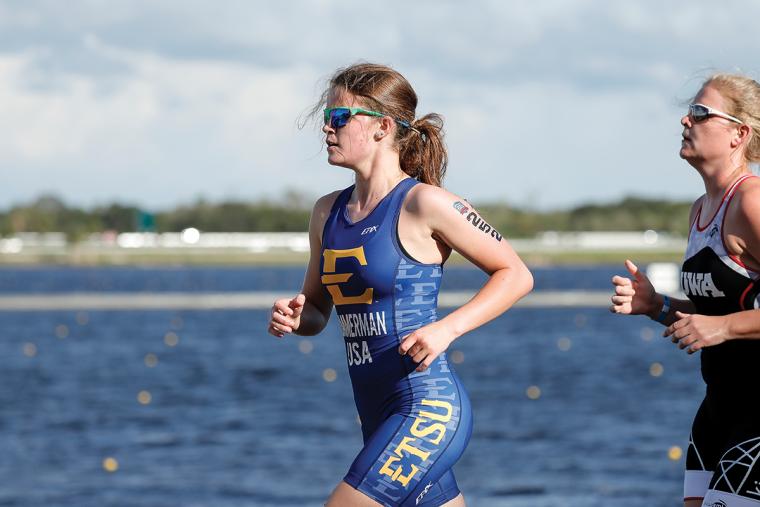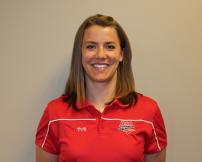

While each athlete’s motivations for choosing whether or not to participate are different, we know that there are several barriers to entry into the sport for newbies. Some of the most common barriers are a fear or lack of ability to swim, a general lack of knowledge about the sport and a perceived financial barrier. We are working to address each of these issues by providing free educational content and training plans at mytimetotri.com, partnering with 44 USA Triathlon Ambassadors to host triathlon clinics and info sessions in their communities, and working with race directors and retailers nationwide to keep the sport affordable for all.
Participation Trends
From 2016-17, we saw an increase in participation by men ages 65-84 and women ages 65-79. This trend tells us that we have a strong contingent of age-group athletes who come back to our events year after year and continue to prove that age is no barrier. At the same time, it reveals that there’s work to be done in appealing to those younger age groups to create a more sustainable pipeline.
Outside of specific age groups, we’re also seeing growth in a few different program areas. Our Splash & Dash Youth Aquathlon Series will have record participation in 2018, and we are seeing great momentum in adding new women’s NCAA varsity collegiate triathlon programs (in the fall, we passed the halfway point to achieving full-fledged NCAA Championship status by recruiting our 20th school, and we’re now at 22). We are also seeing growth in the multisport discipline of aquabike (swim-bike).

By announcing the initiative at the Triathlon Business International Conference in January, USA Triathlon and IRONMAN reached three key groups of industry stakeholders – coaches/clubs, race directors and retailers/brand manufacturers – with a call-to-action to sign a public pledge at mytimetotri.com/pledge and make this an initiative powered by entire industry.
To date, we are proud to say that nearly 400 individuals and organizations from across the industry have signed the pledge, offering everything from in-kind donations of advertising space to discounts on race entry fees as their way of contributing and helping to grow the sport. In addition, roughly 5,000 people have downloaded training plans at mytimetotri.com.
Site Selection for National Championships
When selecting sites for championship events, USA Triathlon looks for a strong, well-rounded and connected local organizing committee. With the nature of our sport, which combines swimming, biking and running, it is important to have all the backing and resources to properly permit and execute. This is not possible or feasible without a strong infrastructure in place. While each discipline feeds into the race as a whole, the local organizing committee must understand that each portion of the race carries its own challenges and intricacies. In addition, we take into consideration previous experience hosting large-scale national or international events, climate, airport proximity, hotel availability and nearby local attractions. Of course, a strong local club presence is a bonus in that those athletes will turn up at the race in large numbers and potentially help us recruit volunteers as well.

Growth of Triathlon at the College Level
Per the NCAA’s regulations, our goal is to recruit 40 schools to start varsity women’s triathlon programs by 2024. Currently, 25 colleges and universities sponsor triathlon at the varsity level for women (the full list of programs is available on our website). We have seven schools in the pipeline that have verbally committed to adding the sport, so those announcements will be coming out in the next few months. We are also speaking with dozens of other institutions at all three NCAA divisions about program additions. Key to these discussions is location density (schools that are within driving distance of one another so they can compete locally/regionally), conference affiliations and timing.
USA Triathlon currently has 140 registered collegiate clubs This year, the USA Triathlon Foundation is offering a grant to new and restarting clubs to increase participation and maximize sustainability for the collegiate club program. Club teams may apply for up to $500 in funding to attend the USA Triathlon Collegiate Club National Championships, purchase or rent equipment, host a conference race or purchase pool or track time for practices. More information is available on our website.
We really dove into the hard recruitment process in January of 2017, led by USA Triathlon Chief Operating Officer Tim Yount and USA Triathlon High School, Collegiate Club and Women’s NCAA Coordinator Jessica Welk. We start by explaining why the sport is a great addition and a positive impact on a university’s athletic department and a sustainable choice for a long-term program addition. Calls and e-mail exchanges with Athletic Directors (ADs) and Senior Woman Administrators (SWAs) allow us to answer most questions and create solutions to concerns they might indicate as roadblocks when considering adding the sport. We spoke via phone and e-mail with more than 140 institutions in 2017 alone. Secondly, we reach institutions through the conference route. Last year alone, we met face-to-face with 14 conferences and spoke to two others via conference call during respective meetings of ADs, SWAs, FAR (faculty athletic representatives) and presidents. Through this route, we reached nearly 350 individuals and 200 institutions. This year, we are slated to speak at another eight conferences. One of the most important touchpoints is the USA Triathlon Foundation Women’s Emerging Sport Grant, which we emphasize as a funding opportunity for initial costs such as coaching, travel and scholarships in some cases.
We are now hard at work to create additional programming and support for existing institutions, so we don’t see any attrition with those programs. Each season we learn about where we can do more for schools in all capacities and challenges we need to address. We feel the health of the NCAA program is strong and gaining momentum.
The NCAA’s timeline is officially 2024 – by that time, we need to recruit 40 schools to achieve full-fledged NCAA Championship Sport status. However, USA Triathlon’s internal goal is to reach 40 schools by 2020. We feel confident that we are on track to accomplish that goal. We are committed to reaching that target, but equally important is ensuring that the varsity programs we do bring in remain healthy and sustainable for the long term. SDM



